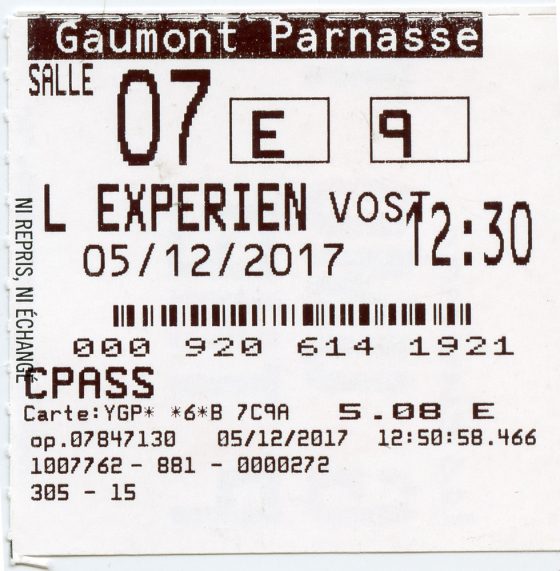Flatliners

Guilty Unconscious
Before you congratulate me on being the only person who saw the Flatliners remake, let me congratulate myself. I’m the only one who will be saying this: that I saw it, and that Flatliners is the perfect film to remake. No, not the original. I’m talking about the remake.

The central premise is there, coming back to life and what you see and whatnot…you see.
The remake adds something new in the character of Ms. Ellen Page, someone trying to find an empirical reality for life after death. Deliberately dying and being brought back to life is a beefy genre take on the ostensible conflict between the spirit and the rational.
There are some nice moments in there, like where coming back from the dead makes you all able to fast-quote late night wikipedia searches on neurological disorders by under deadline screenwriters.
Additionally it makes onscreen attractive young med students (who exactly as attractive as yourself) want to have sex with each other. Which would be fun to watch, if there was an unseen creepy audience, for example.
So all the elements are extant, but it is a disaster for so many reasons, and instructive for one of them. It was unwise to pilfer the the stupider parts of the original, that is to say, that you will face some kind of judgement over the hurt feelings that someone suffers. Unless, the film seems to say, you kill somebody. For that, you get forgiveness.

The title change was to L’Expérience interdite, or you know, the forbidden experience. The re-titlage somehow gets and is the problem, that dulling hinting at boundaries being crossed is the same as seeing them.
Guilt and forgiveness is an interesting subject for a film, though problematic for the same reason that the coming back to life stuff is – no mechanics. You kill someone. Fine. Then you bring them back. That’s…it. Watching this just feels like a car that won’t start in a horror film. No, it doesn’t matter that we saw that the car wouldn’t start in the first act – you have to see Jason messing around with the carburetor.
He took a course with DeVry. It’s why he kills. They put it in the back story. Am I the only one who saw Jason X?
Guilt and forgiveness, same problem. The struggle is internal – the character feels bad…and then doesn’t. The film stumbles around a bit here, with what amounts to the twist being that you have to forgive yourself and not beg forgiveness from someone else for that thing that you did. Apparently, we only do one bad thing in life. Turns out, the act of forgiving yourself is exactly as exciting as having someone say they forgive you.
But there is also a pedagogic aspect…which I eventually got to. I know I don’t believe in act structure, but it’s interesting to watch this film where the second and third act arrive ten minutes before its end.
And no, the educational part is not that I’m always contradicting myself.
In gearing myself for the next go-around screenwriting-wise, hence been reading a lot of books about writing, acts and so on. With the general lack of conflict, act structure, etc, the evidence might indicate that no one else is still reading these but me. And no one should, as like the film in question, these books both suck and are instructive.
It’s almost as if there’s a theme.
The Bible, the big long one, bears some resemblance to Syd Mead and The Writer’s Journey in that by being deliberately vague and open-ended, you can believe anything you want, and find justification in the text. It’s the secret to their success. Marx would be proud. As long as you never find out he did it too.
We want conflict in our stories. But we don’t want to define it or anything. This permits anything to be identified as the first, second, and third act. She feels bad, for instance. Even better, she says she feels bad. Ah, says the studio drone, that’s the start of the story!
In this case, she brings someone back to life, which seems like the start of something. But, as per above, without mechanics, there’s no conflict or blocks or obstacles, so it’s not an act break.
And so you watch a film without any goals or obstacles until until the ghosts appear and then…they figure out how to get rid of them. It’s a film where the second and third act comes ten minutes before the end, and then it’s over.
There are so many easy fixes here, make it a choice or an accident and then a choice. Use blackmail. Have the first person die, and then go back. Instead the students happily volunteer to be killed and brought back to life. As if they know that they’ll be fine.
They saw the first film. And wanted to remake it.
I know the feeling.
The Take

$1.00
The Lonely Comments Section

 [logo]
[logo]